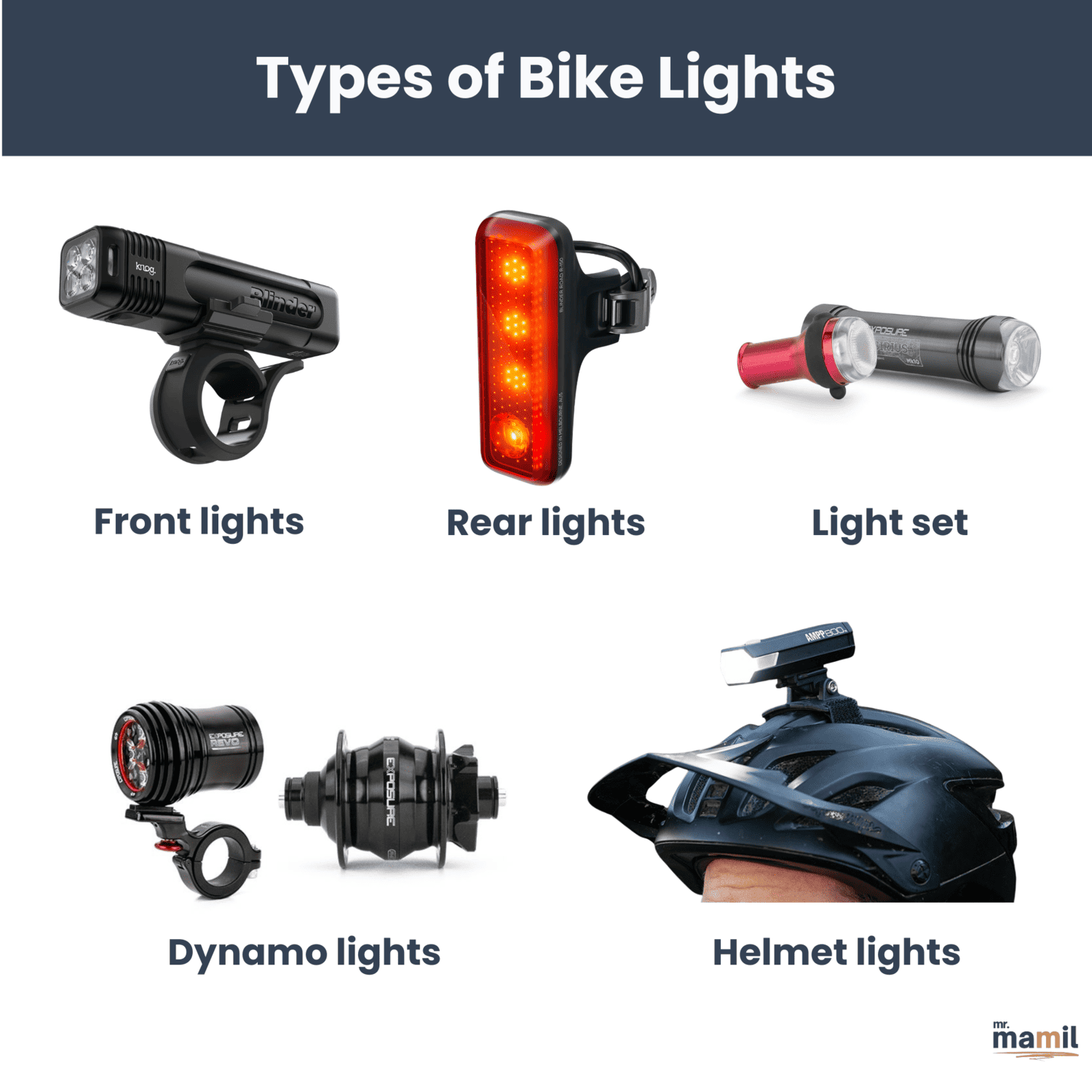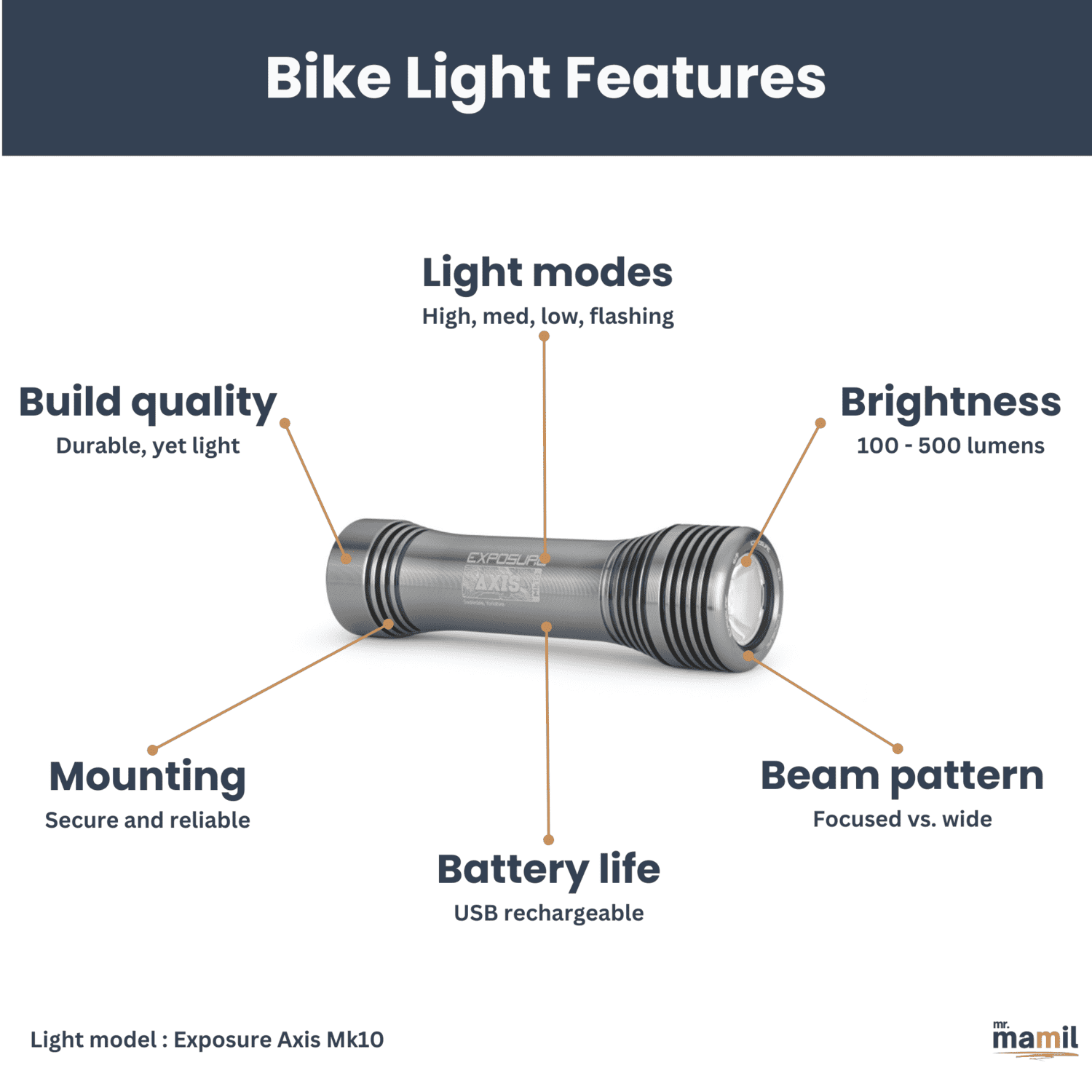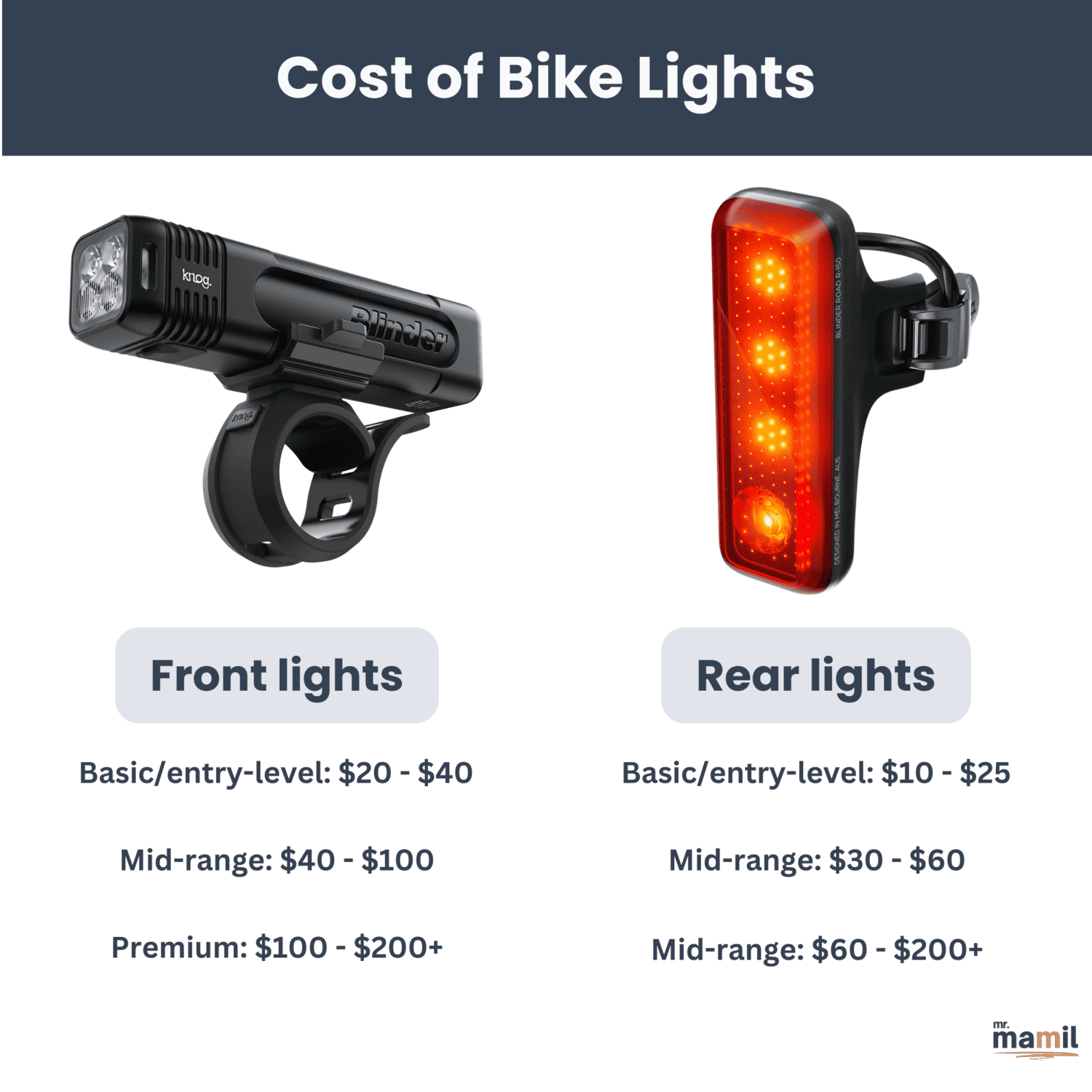Bike Lights
Bike lights keep you safe. When you’re riding, lights make sure cars and other people can see you, which is super important, especially when it’s dark or foggy. It’s like having a bright-colored flag that says, “Hey, I’m here!”
Here, you’ll learn everything you need to know about bike lights, from why they’re as important as your bike helmet to how to pick the best ones for your riding.
Whether riding under the city lights or out on a shadowy trail, we have the info to help you shine. We cover different types of lights, what features to look for, how to ensure you’re following the law and the cool new tech that makes bike lights smarter than ever.
Why use bike lights?
Bike lights are essential for ensuring a safe and enjoyable cycling experience, regardless of the time of day or weather conditions. Using bike lights is a critical aspect of safe cycling for several reasons;
- Visibility to others. Bike lights significantly improve your visibility to other road users. Whether it’s motorists, pedestrians, or fellow cyclists, having a well-lit bike ensures you can be seen from a distance, which is crucial at intersections, on curves, and in areas with heavy traffic. Front lights allow oncoming traffic to spot you, while rear lights alert those behind you of your presence.
- Illuminate the path. Front bike lights help illuminate the path ahead. They reveal potential hazards on the road, such as potholes, branches, debris, or sudden changes in road conditions. This is especially important when street lighting is poor or non-existent, like on rural roads or trails.
- Legal compliance. In many places, using bike lights is not just a safety recommendation but a legal requirement, particularly after dark. Adhering to these laws helps avoid fines and ensures that you are not found at fault in the event of an accident.
- Improve confidence and safety. Knowing that you are visible to others and can see your route clearly can boost your confidence when cycling, particularly for new cyclists or those riding in challenging conditions. This increased confidence can also make your riding behavior more predictable to others, further enhancing safety.
More reading
What are the types of bike lights available?

- Front lights. Mounted on the handlebars or the front fork. Primarily white LEDs that illuminate the path ahead and make cyclists visible to oncoming traffic.
- Rear lights. Attached to the seat post, bike frame, or rider’s clothing or gear. Typically red LEDs signal to others behind the cyclist, similar to a car’s taillights.
- Light sets. Bundles that include front and rear lights ensure a matched set for all-around visibility.
- Helmet lights. Mounted on a helmet, it provides the advantage of directing light wherever the rider looks. It can be used in conjunction with other lights for better visibility.
- Wheel lights. Installed on the spokes or rims of bike wheels. Increase side visibility and provide an eye-catching circular display as the wheels rotate.
- Dynamo lights. A dynamo hub in the wheel generates electricity as the wheel turns. Provide a reliable light source without needing batteries, though they can create a slight drag.
More reading
What makes a good bike light?

When selecting a good bike light, several key features will ensure you get the best performance and safety on the road.
- Brightness. Measured in lumens, the brightness of a bike light determines how well you can see and be seen. A light with a higher lumen count will illuminate a larger area and make you more visible to others. A front light with 100-500 lumens may be sufficient for city riding, while trail riders often need 600 lumens or more.
- Beam pattern. Bike lights can have a focused beam for long-distance illumination or a wide beam for broader visibility. A good bike light may offer a combination of both to provide both depth and breadth in visibility. A beam illuminating a wider path without blinding oncoming traffic is ideal for road cycling.
- Battery life. Long battery life is crucial to avoid running out of light during a ride. Many lights are USB rechargeable, which is convenient for easy charging from various power sources.
- Light modes. Multiple lighting modes are a significant feature, allowing you to adjust the light’s brightness and pattern to suit different conditions and conserve battery life. Modes typically include steady, flashing, and pulsing. The light should be easy to operate, with an intuitive interface to switch between modes while riding.
- Durability and build quality. The light should be able to withstand regular use in various weather conditions. Look for lights with robust construction, water-resistant or waterproof ratings, and resistance to impact. The mounting system should also be secure and reliable.
Other features that can enhance a bike light include side visibility, where side windows or additional LEDs provide visibility from angles other than directly in front or behind and smart features like automatic brightness adjustment based on ambient light or the bike’s speed.
Some modern lights also offer connectivity with smartphones for additional functionality, such as battery status alerts or theft deterrent mechanisms.
More reading
How much does a good bike light cost?

The cost of bike lights can vary widely depending on the features, brightness, brand, and other factors.
For front bike lights, you can expect the following price ranges;
- Basic or entry-level. Around $20 to $40.
- Mid-range. Higher lumens and better features, prices can range from $40 to $100.
- Premium range. Very high lumens can cost upwards of $100 to $200 or more.
For rear bike lights, expect to pay;
- Basic or entry-level. Around $10 to $25.
- Mid-range. More advanced rear lights with additional features such as USB charging or higher lumens cost between $30 to $60.
- Premium range. Advanced rear lights with features like radar detection or very high lumens, prices can go from $60 to $300.
More reading
What does the law say about bike lights?
Here’s a summary of bike light laws from various regions:
- United States. The laws can vary by state. Generally, a white front light and a red rear light or reflector are required for riding at night. Some states may have specific requirements regarding the brightness of the lights, the use of flashing lights, or additional equipment like side reflectors.
- Canada. The requirements also differ by province. However, it is commonly mandated that cyclists have a white headlight, a red rear light, and reflective devices on the bike’s front, rear, and sides.
- United Kingdom. Cyclists must have a white front light and a red rear light when cycling between sunset and sunrise. Reflectors are required on the pedals and the rear of the cycle. The lights must conform to specific standards if they emit a steady light, and flashing lights must flash at a certain rate to be legal.
- Australia. The law requires riders to use a front white light and rear red light visible from at least 200 meters away and a rear red reflector visible from 50 meters when riding in dark conditions or at night. The lights should ideally be mounted on the handlebars and seat post for optimal visibility to other road users.
Check the specific requirements of your region, as bike light regulations can be quite detailed and vary significantly. Compliance ensures legal protection and significantly enhances safety during low-light conditions or at night.
More reading